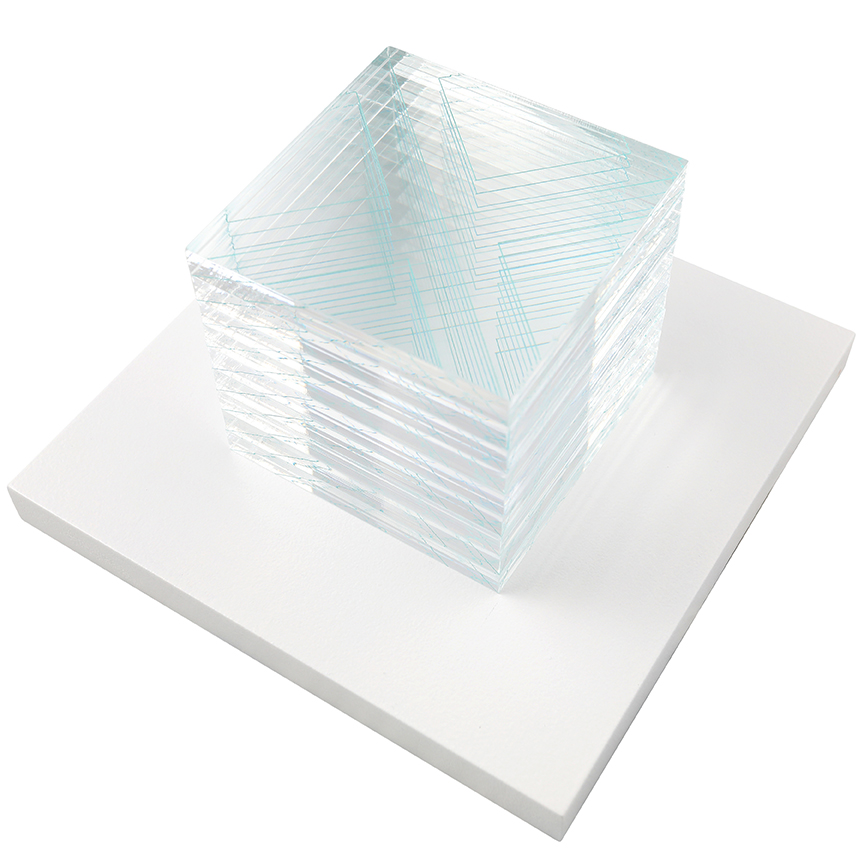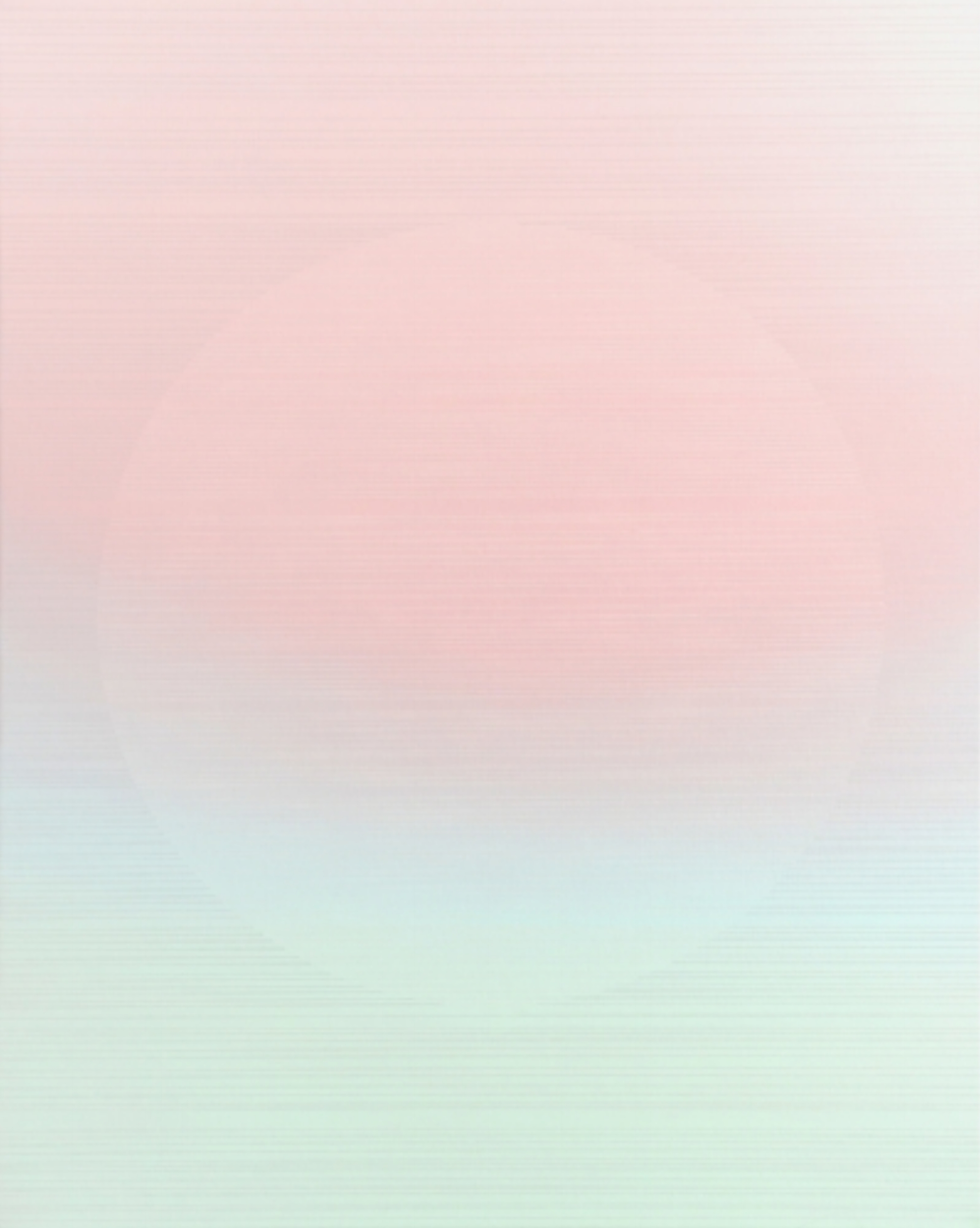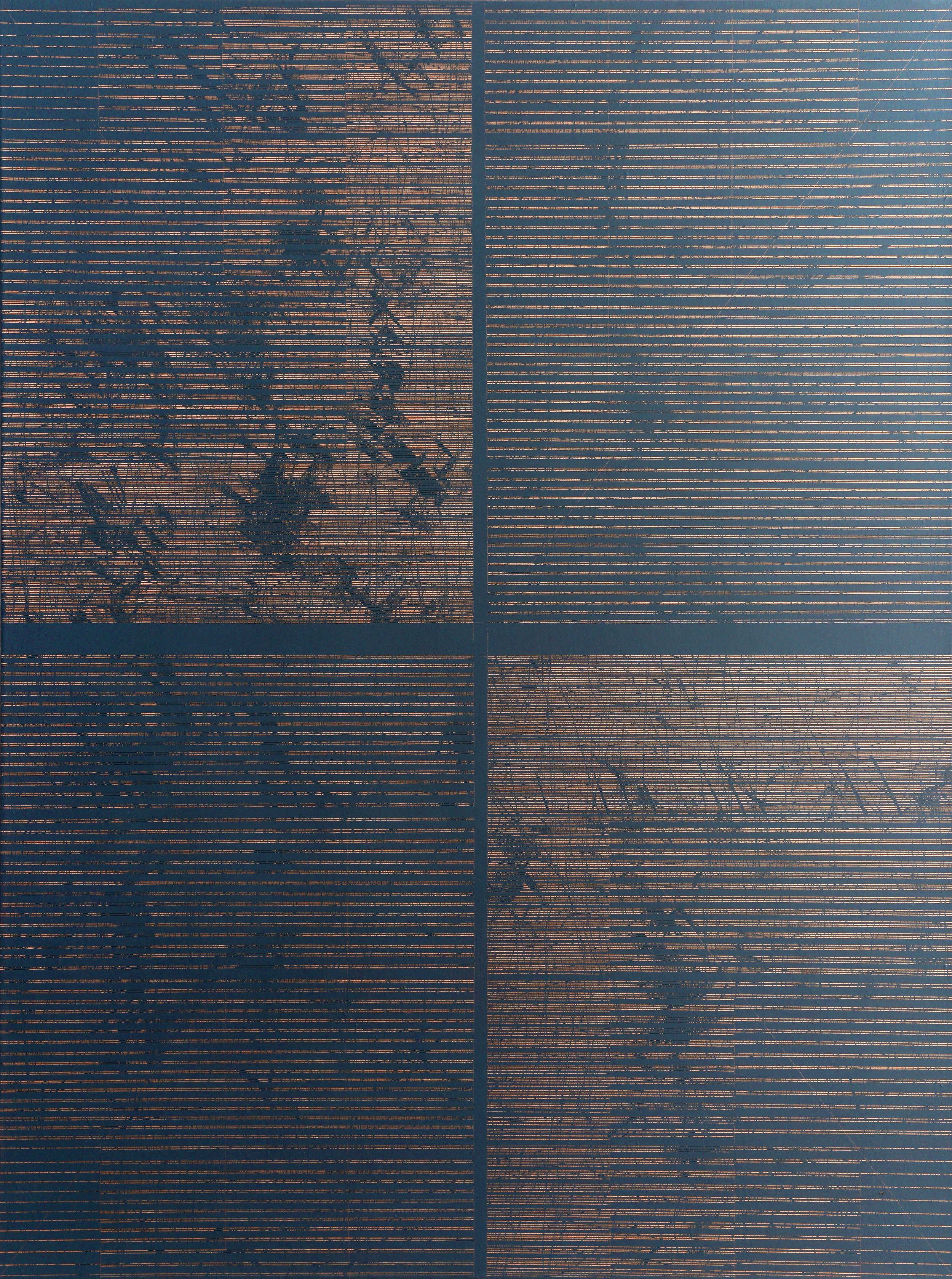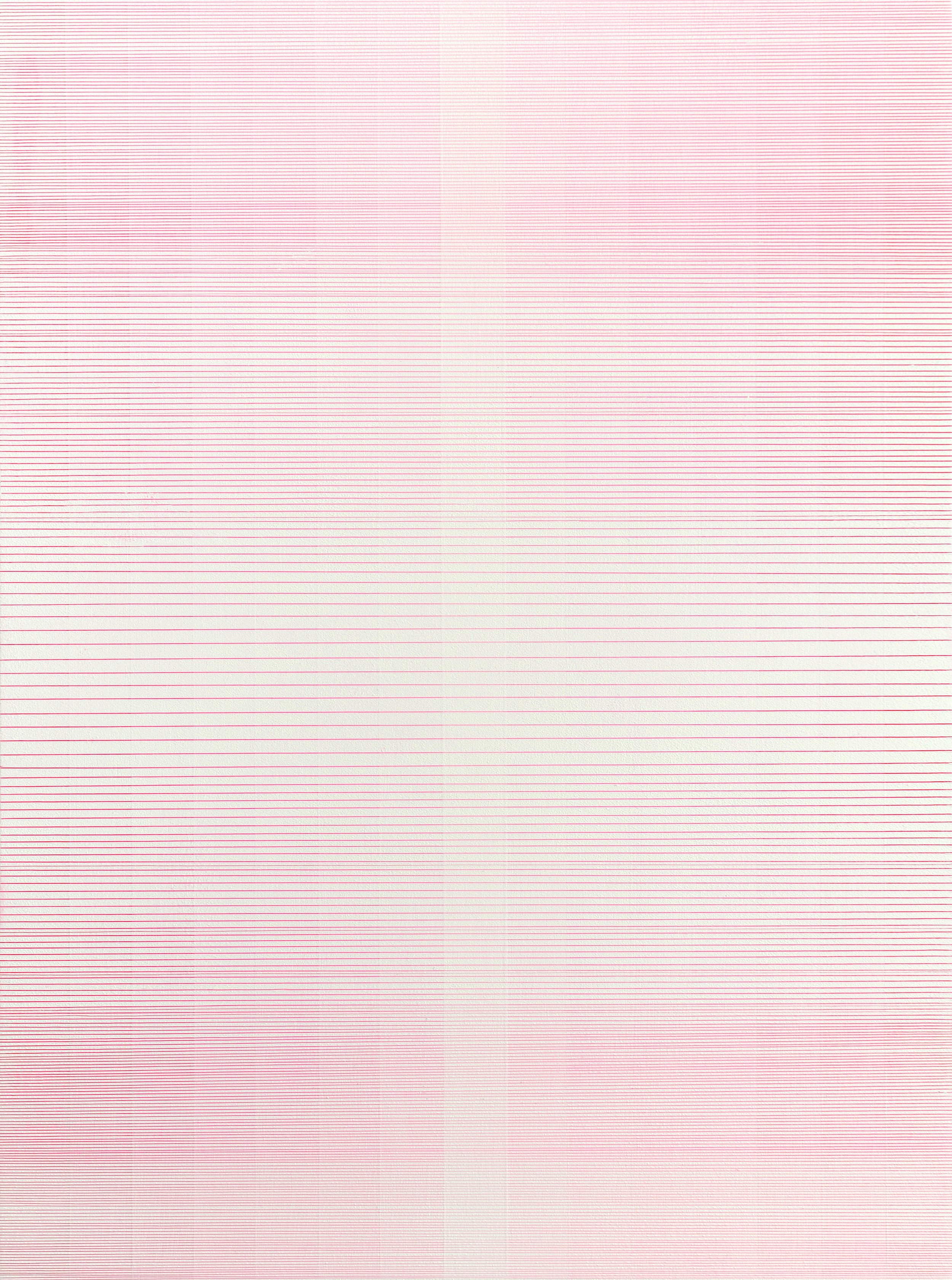



















































Steven MacIver
Coalition/Reconstruction
September 7 – November 2, 2017
Opening Reception: Thurs, Sept 7, 2017, 6-8 PM
Dillon + Lee is pleased to announce “Coalition/Reconstruction,” our third major solo exhibition of new works by Scottish artist Steven MacIver.
Interview with Steven MacIver:
In your last solo show “Out of Orkney,” you were making drawings referring to the topography of Orkney, the small group of islands off the north coast of Scotland where you grew up. Are these new works still related to memory and landscape?
This year has been about introducing color into the work and creating a kind of coalition between drawing and painting. That's really as much as a brief as I was willing to give myself so I'm hesitant to overload the work with a narrative. Whereas the previous series was inspired by memory and place, this body really has been about the act of making and how I could use drawing in a way that elevated it from a simple “means to an end” to something that could stand-alone.
How have your old methods of working influenced this new series? Techniques? Colors? Material?
It's hard to answer that question without seeming negative about my previous work. The fact of the matter is, after a period of time for reflection, I revisited the imagery of the older work and felt, well, a bit cold. My approach has always been a formulaic, process-driven one, but I think I reached a point where the near “automatic” production had sucked some life out of the work. From a technical point of view, I felt I needed to deviate from the spatial, perspective-led compositions that informed the previous series and challenge myself to be bolder with color and abstraction.
Your process seems to leave little room for mistake, how do you develop and plan your pieces, if there is planning involved?
There's still quite a lot of planning that goes into each piece, but not nearly as much as there used to be. Sometimes the only plan is to utilize a process that I've been developing and the painting forms around the use of that process. There are times when a word or phrase gets stuck in my head and I start to plan a new piece around that. That was the case with the “fallen geometry” series. I'm not even entirely sure it's a phrase that makes sense, but I wrote it on the studio wall one night and started to explore the fluid, ribboned line pieces the next day. It's at that point the process takes over— I knew I wanted to make drawings in a certain way, but wasn't sure how to do that.
The next week was spent developing mechanisms to get what was in my head on to the canvas. One of the big differences in approach to this series of work has been the relatively quick transition from concept to execution. In the past, I tended to have an idea and over think the various stages of production without actually making anything. Ideas were being exhausted before they were tried or tested and this is something I changed in my process. This time, I acted as soon as I had the beginnings of an idea, pausing the thought process and getting in the studio as soon as possible. I found this to be not only a more stimulating way to work, but by physically working out concepts in the studio I was able to gain a greater understanding of the process.
How do you decide if a piece is complete or needs to be reworked?
It's funny, in my opinion, one of the most challenging parts of making a painting is knowing when it's finished. It's easy to overwork something because you feel you haven't spent long enough on it or you stick to a predetermined idea and don't take a moment to stand back and re-evaluate during the process. I tend to use that first 5 minutes of the day to look at the work with fresh eyes and make decisions on what I need to do. I've also tried to slow down my decision making process when it comes to judging a new work or a work in progress. Often, something that looks doomed to fail can be turned around with a fresh approach, even a change of mood. Of course, sometimes they're just doomed to fail and there's no saving them. There are multiple canvases that have been removed from the stretcher, rolled up and dumped in the reject pile, but I'm happy about that. It's very easy to be overly precious about your practice. Investing 100 hours in a painting doesn't automatically mean it's going to be any good. Conversely, something great can appear in an afternoon.
The three dimensional sculptures seem to be directly influenced by your paintings, but could you tell me what made you create this work? i know you made these types of pieces before but you took a break. So wondering what made this time the moment to bring them back.
The idea that drawing can come off the page and be explored in three dimensions has always interested me. I did this with my yarn installations and the acrylic objects a few years ago. This time, I wanted to use the object to suspend drawing in space. Paintings of the past had created the illusion of space and depth, but that doesn't really interest me at the moment. These objects were a way to make drawings in actual space and in three dimensions. Something that one could interact with without using the tricks of perspective. If I were asked to label them, I'd call them drawings before sculptures or objects.
Can you tell me a bit about the chronology your work? You were first working on smaller delicate line pieces with color, then it seemed to move to the X's or segments, then O's. And then something happened where you seemed to have had a break through with the squigglies, which seemed to have served a purpose not only for the paintings with those curvy lines, but for the works coming after that, in terms of how fluidly and organically you seemed to be preparing your surfaces (ie. in the marbled surface pieces). And then there seemed to be another break through in terms of actual material surface in your use of linen and muslin
I remember getting back to the studio after spending Christmas and New Year with my family up in Scotland. I had ordered a stock of small canvases, without any fixed plan of what I was going to develop, other than a desire to use more color and create drawings in new ways. I don't think that had anything to do with my state of mind, but I knew I wanted to open up my palette. Drawing and line would still be the driving force behind the work, but I wanted this to be married with color that felt uplifting to me, optimistic even.
The work that followed was a combination of relatively simple, geometric compositions, scratched (using a scalpel) into wet oil color of pastel greens, pinks and blues. I'm a lot more at ease with doing ‘less’ these days. In the past, I felt the need to show off, to demonstrate every technical capability in every work. I think I'm more confident now to do only what is necessary to make the piece function. I'm not saying I'm a minimalist artist, far from it, but I've certainly stripped back a lot of what I now feel to be unnecessary.
The fluid lines, the “squigglies” and the organic surfaces were a consequence of getting to know paint again. I was working under a very open brief with my only intention being to combine drawing and painting without giving full control to either discipline. In this sense, having a loose plan that involved just line and color opened up the possibility of experimentation with materials like muslin and linen and reconfiguring stretcher bars to become part of the composition.
It's easy to categorize your own work, to give yourself a self imposed title of “landscape artist” or “figurative painter.” This year has been particularly enjoyable and productive because I actively resisted the temptation to pigeonhole my practice. I've worked without any fear of failure, something I've struggled with in the past and I've just made art, then more art. I've trashed as many canvases as I'll show in this exhibition, but every one has benefitted me in some way.
Steven MacIver was born in the Orkney Islands and completed his BA in Fine Arts at Gray’s School of Art in Aberdeen and his MFA at the Slade School of Art. Following his graduation in 2004, MacIver was honored with the Sainsbury Scholarship in Painting and Sculpture at the British School at Rome. MacIver has received numerous awards and grants and has exhibited extensively in the UK where his work is held in several collections. He currently lives and works outside Oxford.
